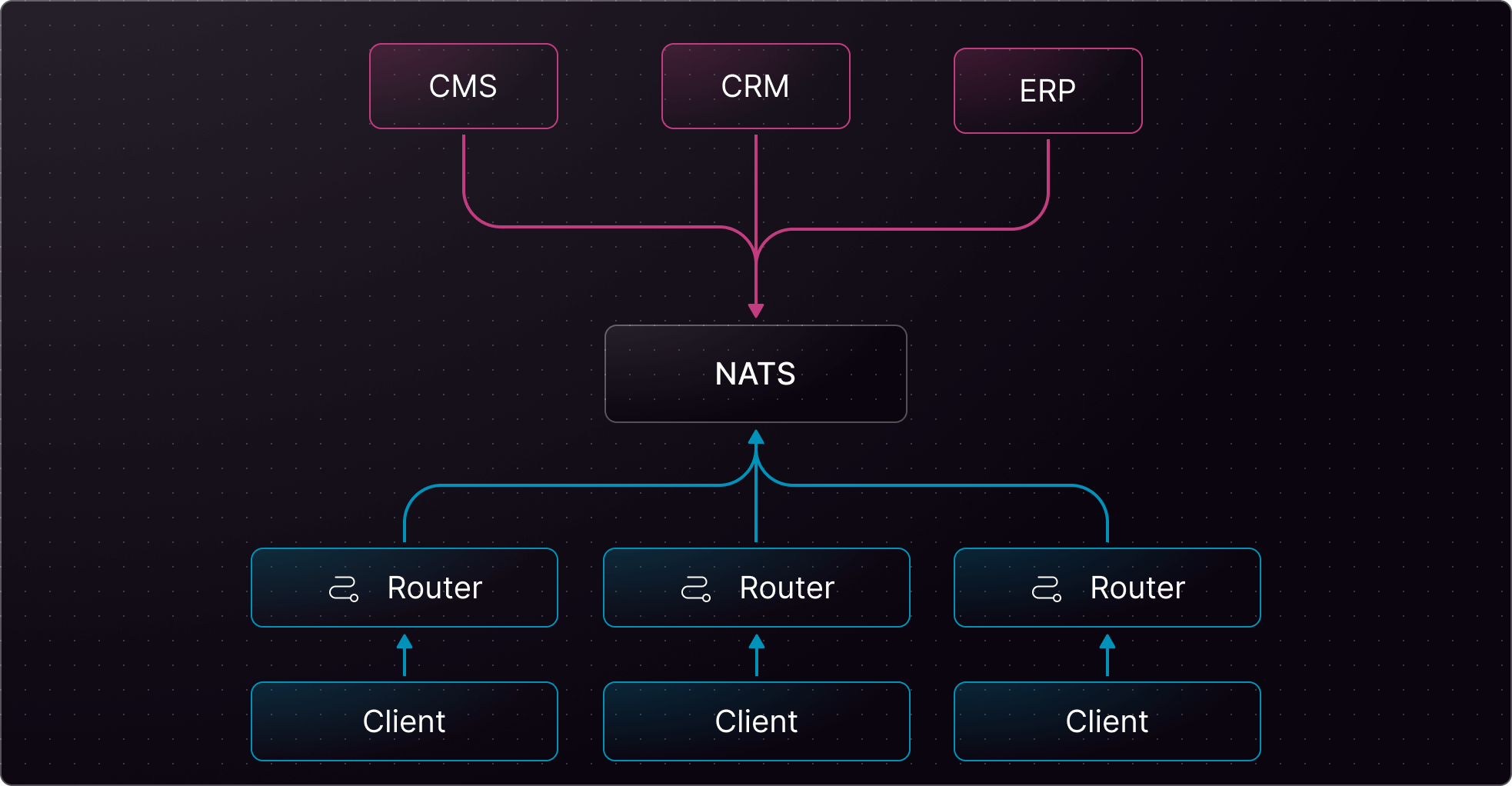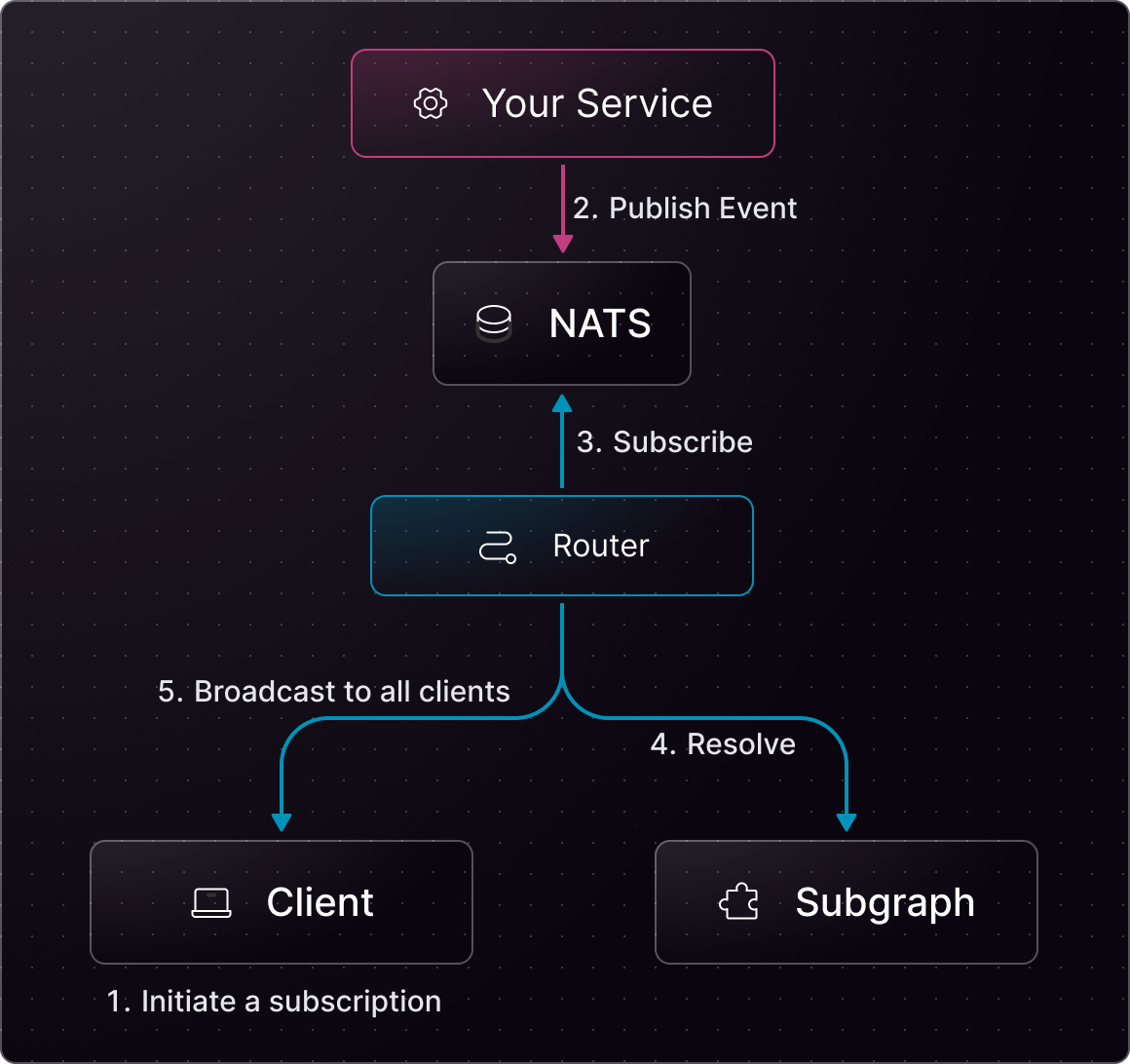
Network with NATS, routers, and clients
Minimum requirements
| Package | Minimum version |
|---|---|
| controlplane | 0.88.3 |
| router | 0.88.0 |
| wgc | 0.55.0 |
Full schema example
Here is a comprehensive example of how to use NATS with Cosmo Streams. This guide covers request, publish, subscribe directive. All examples can be modified to suit your specific needs. The schema directives andedfs__* types belong to the Cosmo Streams schema contract and must not be modified.
Router configuration
Based on the example above, you will need a compatible router configuration.Example Query
In the example query below, one or more subgraphs have been implemented alongside the Event-Driven Graph to resolve any other fields defined onEmployee, e.g., tag and details.surname.
Event-Driven Graphs (EDGs) do not define resolvers, and can only define fields that compose an entity’s primary key(s).
System diagram

NATS subscription flow from service to clients